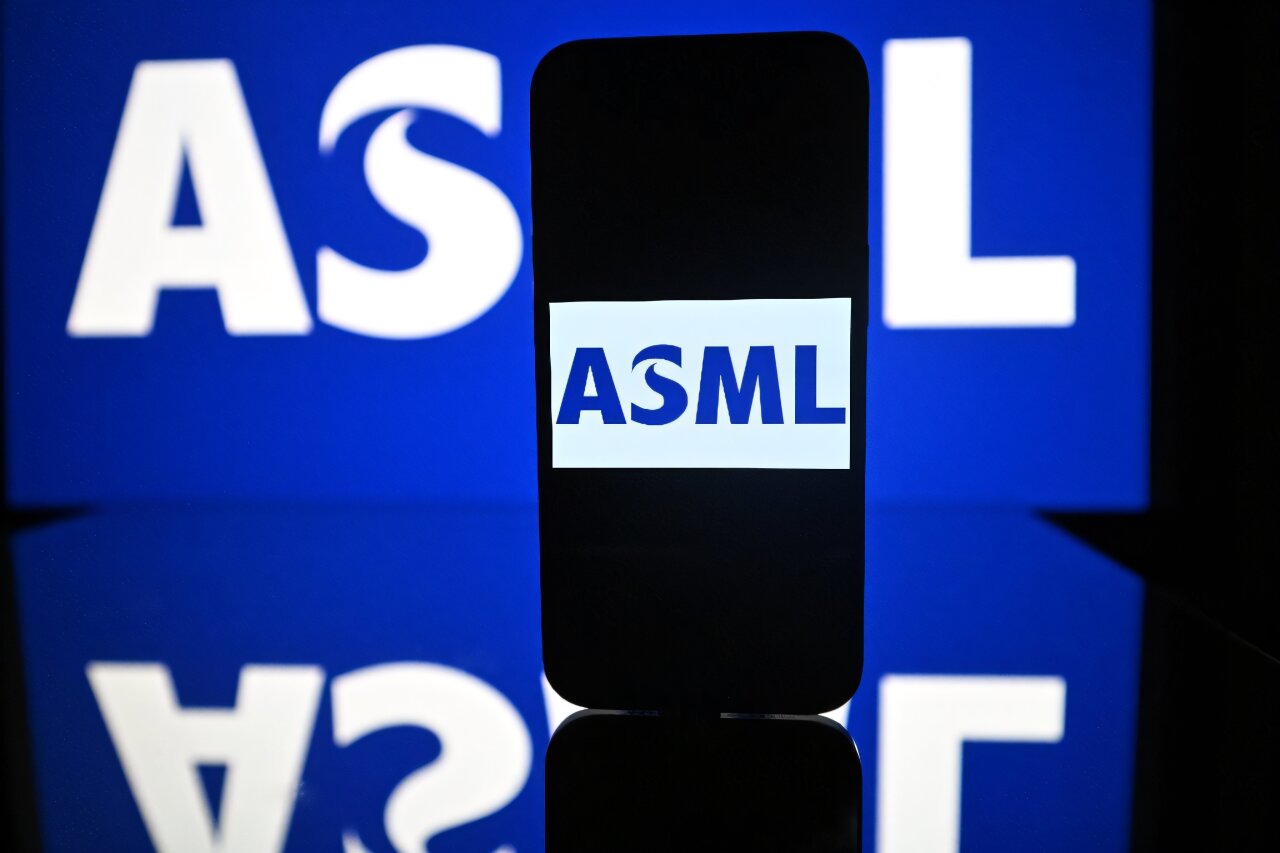Tech
Dutch tech giant ASML posts stable profits, warns on China sales

Dutch tech giant ASML warned Wednesday of a steep fall in its China business next year, as it booked flat net profits in the third quarter of 2025 compared to the same period last year.
Traders appeared to see the glass half-full, with ASML shares opening more than 3% higher in Amsterdam, buoyed by solid sales and orders for its cutting-edge semiconductor production machines.
ASML has faced growing pressure from US and Dutch export curbs for its most advanced chipmaking tools to China, as Beijing and Western nations are locked in a battle for the key sector.
“We expect China customer demand, and therefore our China total net sales in 2026, to decline significantly compared to our very strong business there in 2024 and 2025,” said CEO Christophe Fouquet in a statement.
The firm announced net profits of 2.13 billion euros ($2.5 billion), after 2.08 billion euros in the third quarter of last year.
Net sales in the third quarter of 2025 came in at 7.5 billion euros. ASML had forecast a figure between 7.4 billion euros and 7.9 billion euros.
“Our third-quarter total net sales… were in line with guidance, reflecting a good quarter for ASML,” said Fouquet.
In July, the firm had warned that geopolitical and trade tensions had clouded the near-term outlook for its growth.
ASML said then that it could not confirm it would be in the black in 2026.
But on Wednesday, Fouquet said, “We do not expect 2026 total net sales to be below 2025,” adding that the firm would give more details on next year’s outlook in January.
“I think we have seen a flow of positive news in the last few months that has helped to reduce some of the uncertainties we discussed last quarter,” said Fouquet.
The CEO said he expected sales in the fourth quarter to come in between 9.2 billion and 9.8 billion euros.
For the full year 2025, the firm predicts a 15% increase in total net sales.
Net bookings, the figure most closely watched in the markets as a predictor of future performance, reached 5.4 billion euros, compared to 5.5 billion in the second quarter.
According to a presentation posted on the firm’s website, sales to China represented 42% of ASML’s overall business in the third quarter, up from 27% in the second quarter.
Geopolitical battleground
Longer-term, ASML believes that the rapidly expanding AI market will push up its annual sales to between 44 billion and 60 billion euros by 2030.
ASML is a critical cog in the global economy, as the semiconductors crafted with its tools power everything from smartphones to missiles.
Semiconductors have become something of a global geopolitical battlefield.
Washington has sought to curb exports of high-tech chips to China, worried they could be used to fuel Beijing’s military.
Last week, a US Congressional committee report said five companies, including ASML, had sold $38 billion worth of critical tech to China in 2024, including to firms flagged as US national security threats.
“China is striving with all its might to build a domestic, self-sufficient semiconductor manufacturing industry,” the report said.
Earlier this week, chip-related tensions grew between China and the Netherlands after the Dutch government took control of Chinese-owned chipmaker Nexperia, citing national security concerns.
That meant while the company—based in the Dutch city of Nijmegen—can continue production, the Dutch government can block or reverse its decisions.
Parent company Wingtech said it was appealing to Chinese authorities for support and discussing legal action with international law firms.
© 2025 AFP
Citation:
Dutch tech giant ASML posts stable profits, warns on China sales (2025, October 15)
retrieved 15 October 2025
from https://techxplore.com/news/2025-10-dutch-tech-giant-asml-stable.html
This document is subject to copyright. Apart from any fair dealing for the purpose of private study or research, no
part may be reproduced without the written permission. The content is provided for information purposes only.
Tech
The Best Cyber Monday Streaming Deals With a Convenient Roommate’s Email Address

HBO knows you’re bored and cold. It wants you to Max and chill with Noah Wyle in scrubs. The company offers some of the best Cyber Monday streaming deals with a ridiculously low-priced $3/month offer for basic HBO Max (it’s the version with ads and 2K streaming, but still, super-cheap). Disney Plus and Hulu deals are bundled up for $5/month. Apple TV wants back in your life for $6.
Of course, this deal is only meant for new customers. Not boring ol’ existing customers. If you already have basic HBO Max, you’re already paying $11 for the same service, and HBO would like you to keep doing that. Streaming apps are banking on you being complacent and happy in your streaming life. Maybe they’re even taking you for granted.
Sometimes you can get the current deal just by threatening to cancel, or actually canceling, your account. Suddenly, you’re an exciting new customer again! Another method is by using an alternate email account (perhaps your spouse’s or roommate’s?) and alternate payment information as a new customer. If you do use a burner email (you did not hear this from me), check in on your favorite app’s terms of service to make sure you’re not in violation by re-enrolling with different emails. I’ll also issue the caveat that you lose all your viewing data and tailored suggestions if you sign up anew.
But times and wallets are tight! And $3 HBO Max sounds pretty good. After all, every middle-aged American man needs to rewatch The Wire once every five years or so—assuming he’s not the kind of middle-aged man who rewatches The Sopranos instead. Here are the current best streaming deals for Cyber Monday 2025.
Devon Maloney; ARCHIVE ID: 546772
Regular price: $80
Tech
Hong Kong FWA services market set for 9.6% growth | Computer Weekly

Analysis from GlobalData is forecasting that fixed wireless access (FWA) service revenue in Hong Kong is expected to increase at a “healthy” compound annual growth rate (CAGR) of 9.6% between 2025 and 2030.
The latest Hong Kong Total Fixed Communications Forecast set out to quantify current and future demand and spending on mobile services for the special administrative region of China. It noted that growth was being driven by Hong Kong’s extensive 5G network coverage and could also be attributed to local operators’ efforts to expand FWA services and position it as an alternative to traditional fibre broadband services for both residential and commercial sectors, meeting growing demand for high-speed connectivity in areas where extending fibre lines is challenging.
“High-density urban and suburban centres of Hong Kong create a strong business case for FWA services due to their cost-effective and rapid deployments without the complex infrastructure and civil work required for extending fibre-optic lines to such locations,” said Neha Misra, senior analyst at GlobalData.
“Competitive, feature-rich plans from the operators will also help drive its adoption over the forecast period. For instance, HKBN’s 5G Home Broadband Plan provides unlimited 5G broadband data (subject to a 300GB with a fair-usage policy) for HKD118 per month on a 24-month contract, along with a seven-day trial guarantee. The plan also includes a waiver of the HKD28 monthly administration fee and complimentary access to the basic HomeShield security plan.”
In addition to HKBN, the study noted that operators such as 3 Hong Kong and HKT are also using their extensive 5G networks to offer home broadband services, particularly in areas with limited fibre infrastructure. It cited HKT as recently having successfully deployed mmWave-based FWA to deliver ultra-high-speed internet to rural areas and outlying islands.
“Growing demand for FWA provides operators a strong revenue opportunity by expanding home and SME broadband without the high capital intensity of fibre roll-out,” Misra added. “By leveraging nationwide 5G coverage, introducing competitively priced service plans and bundling digital home services, operators can unlock higher ARPU [average revenue per user], accelerate market penetration in underserved areas and diversify beyond traditional revenues.”
GlobalData believes the Hong Kong government’s smart city initiatives will also open new opportunities for FWA, especially 5G FWA, which can deliver high-speed internet to power applications such as the digital economy, digital governance and e-health services, while supporting the city’s dense urban environment and digital transformation goals under the Smart City Blueprint 2.0.
The original blueprint was set out in December 2017, outlining 76 initiatives under six smart areas, namely Smart Mobility, Smart Living, Smart Environment, Smart People, Smart Government and Smart Economy. Blueprint 2.0 puts forth more than 130 initiatives that continue to enhance and expand existing city management measures and services. The new initiatives aim to bring benefits and convenience to the public so that residents can better perceive the benefits of smart city innovation and technology.
Tech
Prague’s City Center Sparkles, Buzzes, and Burns at the Signal Festival

And thanks to a mention in Dan Brown’s new novel, The Secret of Secrets, the festival has gained even more global recognition. Just a few weeks after the release of Brown’s new bestseller set in contemporary Prague, viewers were able to see for themselves what drew the popular writer to the festival, which is the largest Czech and Central European showcase of digital art. In one passage, the Signal Festival has a cameo appearance when the novel’s protagonist recalls attending an event at the 2024 edition.
“We’re happy about it,” festival director Martin Pošta says about the mention. “It’s a kind of recognition.” Not that the event needed promotion, even in one of the most anticipated novels of recent years. The organizers have yet to share the number of visitors to the festival this year, but the four-day event typically attracts half a million visitors.
On the final day, there was a long queue in front of the monumental installation Tristan’s Ascension by American video art pioneer Bill Viola before it opened for the evening, even though it was a ticketed event. In the Church of St. Salvator in the Convent of St. Agnes, visitors could watch a Christ-like figure rise upwards, streams of water defying gravity along with him, all projected on a huge screen.
The festival premiere took place on the Vltava River near the Dvořák Embankment. Taiwan’s Peppercorns Interactive Media Art presented a projection on a cloud of mist called Tzolk’in Light. While creators of other light installations have to deal with the challenges of buildings—their irregular surfaces, decorative details, and awkward cornices—projecting onto water droplets is a challenge of a different kind with artists having to give up control over the resulting image. The shape and depth of the Peppercorns’ work depended on the wind at any given moment, which determined how much of the scene was revealed to viewers and how much simply blown away. The reward, however, was an extraordinary 3D spectacle reminiscent of a hologram—something that can’t be achieved with video projections on static and flat buildings.
Another premiere event was a projection on the tower of the Old Town Hall, created for the festival by the Italian studio mammasONica. It transformed the 230-foot structure into a kaleidoscope of blue, green, red, and white surfaces. A short distance away, on Republic Square, Peppercorns had another installation. On a circular LED installation, they projected a work entitled Between Mountains and Seas, which recounted the history of Taiwan.
-

 Sports1 week ago
Sports1 week agoWATCH: Ronaldo scores spectacular bicycle kick
-

 Entertainment1 week ago
Entertainment1 week agoWelcome to Derry’ episode 5 delivers shocking twist
-

 Politics1 week ago
Politics1 week agoWashington and Kyiv Stress Any Peace Deal Must Fully Respect Ukraine’s Sovereignty
-

 Business1 week ago
Business1 week agoKey economic data and trends that will shape Rachel Reeves’ Budget
-

 Politics1 week ago
Politics1 week ago53,000 Sikhs vote in Ottawa Khalistan Referendum amid Carney-Modi trade talks scrutiny
-

 Tech6 days ago
Tech6 days agoWake Up—the Best Black Friday Mattress Sales Are Here
-

 Fashion1 week ago
Fashion1 week agoCanada’s Lululemon unveils team Canada kit for Milano Cortina 2026
-

 Tech1 day ago
Tech1 day agoGet Your Steps In From Your Home Office With This Walking Pad—On Sale This Week


















